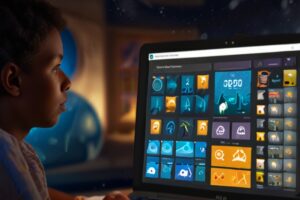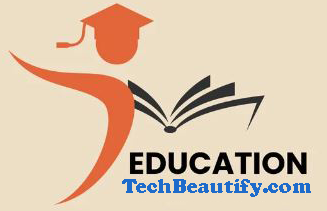Gamification in Education: Making Learning Fun and Engaging
Outline
- Introduction
- Definition of Gamification
- Importance of Gamification in Modern Education
- History of Gamification in Education
- Early Examples
- Evolution Over Time
- Benefits of Gamification in Education
- Increased Student Engagement
- Improved Learning Outcomes
- Enhanced Motivation and Participation
- Key Elements of Gamification
- Points and Rewards
- Badges and Achievements
- Leaderboards
- Challenges and Quests
- How Gamification Enhances Learning
- Active Learning
- Real-time Feedback
- Collaboration and Teamwork
- Gamification Strategies for Educators
- Integrating Game Mechanics
- Designing Gamified Lessons
- Utilizing Technology
- Examples of Gamification in Education
- Classroom Applications
- Online Learning Platforms
- Educational Apps and Games
- Challenges and Considerations
- Balancing Fun and Educational Value
- Avoiding Overjustification Effect
- Ensuring Inclusivity
- Gamification Tools and Platforms
- Popular Gamification Software
- How to Choose the Right Tool
- Case Studies
- Successful Implementation in Schools
- Impact on Student Performance
- Future of Gamification in Education
- Emerging Trends
- Potential Developments
- Tips for Implementing Gamification
- Setting Clear Goals
- Involving Students in the Process
- Continuous Improvement and Adaptation
- Common Misconceptions about Gamification
- Gamification vs. Traditional Teaching
- Misunderstanding Game-Based Learning
- The Role of Parents and Guardians
- Supporting Gamified Learning at Home
- Communicating with Educators
- Conclusion
- Summary of Key Points
- Final Thoughts on the Future of Gamification in Education
- FAQs
- What is the difference between gamification and game-based learning?
- How can gamification be used in early childhood education?
- What are some free tools for gamifying my classroom?
- How does gamification impact student behavior?
- Can gamification be used in higher education?
Gamification in Education: Making Learning Fun and Engaging
Introduction
Let’s face it, traditional education methods can sometimes feel a bit… dull. But what if we could make learning as exciting as playing your favorite video game? That’s where gamification comes into play. Gamification is the process of incorporating game design elements into non-game contexts, like education, to make learning more engaging and enjoyable. By transforming mundane tasks into fun, competitive, and rewarding activities, gamification can revolutionize the way students learn and interact with educational content.
History of Gamification in Education
Gamification in education isn’t a new concept. It has roots going back to the 20th century with early examples like the Boy Scouts and Girl Scouts using badges to reward achievements. Over time, the approach has evolved, especially with the advent of digital technology. From simple classroom games to sophisticated educational software, gamification has continually adapted to meet the needs of modern students.
Benefits of Gamification in Education
Increased Student Engagement
One of the most significant advantages of gamification is that it increases student engagement. By making learning activities more interactive and enjoyable, students are more likely to participate actively and stay focused.
Improved Learning Outcomes
Gamification can also lead to better learning outcomes. When students are engaged and motivated, they are more likely to retain information and perform well in assessments.
Enhanced Motivation and Participation
Through rewards and recognition, gamification boosts students’ motivation. Whether it’s earning points for completing tasks or receiving badges for achievements, these incentives encourage students to put in more effort and participate fully.
Key Elements of Gamification
Points and Rewards
Points act as a tangible measure of success and progress. They can be awarded for various activities, such as completing assignments, participating in class, or achieving high scores on quizzes.
Badges and Achievements
Badges are visual representations of accomplishments. They provide students with a sense of achievement and encourage them to strive for more.
Leaderboards
Leaderboards introduce a competitive element, allowing students to see how they stack up against their peers. This can drive motivation and encourage friendly competition.
Challenges and Quests
Challenges and quests make learning activities more engaging. They can range from simple tasks to complex problems that require collaboration and critical thinking.
How Gamification Enhances Learning
Active Learning
Gamification promotes active learning by requiring students to participate and engage with the material. This hands-on approach helps reinforce knowledge and skills.
Real-time Feedback
Instant feedback is a crucial component of gamification. It allows students to see the results of their efforts immediately, helping them understand what they did right and where they need improvement.
Collaboration and Teamwork
Many gamified activities involve collaboration, fostering teamwork and communication skills. Working together on challenges can help students learn from each other and develop a sense of community.
Gamification Strategies for Educators
Integrating Game Mechanics
Educators can integrate game mechanics into their lessons by incorporating points, badges, and leaderboards into classroom activities. This can be done using digital tools or even simple, low-tech methods.
Designing Gamified Lessons
Designing lessons with gamification in mind involves creating activities that are fun, challenging, and rewarding. This can include everything from interactive quizzes to project-based learning.
Utilizing Technology
Technology plays a significant role in gamification. There are numerous apps and platforms available that make it easy for teachers to gamify their classrooms.
Examples of Gamification in Education
Classroom Applications
In traditional classrooms, teachers can use gamification techniques like rewarding points for class participation or creating group challenges that encourage teamwork.
Online Learning Platforms
Many online learning platforms incorporate gamification to enhance the learning experience. Websites like Khan Academy and Duolingo use points, badges, and leaderboards to motivate learners.
Educational Apps and Games
There are countless educational apps and games designed to make learning fun. These tools cover a wide range of subjects and skill levels, providing engaging ways for students to learn.
Challenges and Considerations
Balancing Fun and Educational Value
It’s essential to strike a balance between making activities fun and ensuring they have educational value. Gamification should enhance learning, not distract from it.
Avoiding Overjustification Effect
The overjustification effect occurs when external rewards diminish intrinsic motivation. It’s important to use rewards judiciously to avoid this pitfall.
Ensuring Inclusivity
Not all students respond to gamification in the same way. It’s crucial to design activities that are inclusive and cater to diverse learning styles and abilities.
Gamification Tools and Platforms
Popular Gamification Software
There are many tools available to help educators gamify their classrooms. Some popular options include Classcraft, Kahoot!, and Edmodo.
How to Choose the Right Tool
When choosing a gamification tool, consider factors like ease of use, compatibility with your curriculum, and the level of student engagement it offers.
Case Studies
Successful Implementation in Schools
Several schools have successfully implemented gamification strategies, resulting in improved student engagement and academic performance. For example, Quest to Learn in New York uses game-based learning to teach subjects across the curriculum.
Impact on Student Performance
Studies have shown that gamification can positively impact student performance, particularly in areas like math, science, and language arts.
Future of Gamification in Education
Emerging Trends
As technology continues to evolve, so too does the potential for gamification in education. Virtual reality (VR) and augmented reality (AR) are emerging as powerful tools for creating immersive learning experiences.
Potential Developments
Future developments in gamification may include more personalized learning experiences, advanced data analytics to track progress, and greater integration with other educational technologies.
Tips for Implementing Gamification
Setting Clear Goals
Clear goals help guide the gamification process and ensure that activities align with educational objectives.
Involving Students in the Process
Involving students in the design and implementation of gamified activities can increase their investment and enthusiasm.
Continuous Improvement and Adaptation
Gamification is not a one-size-fits-all solution. Continuously assess and adapt your approach based on feedback and results.
Common Misconceptions about Gamification
Gamification vs. Traditional Teaching
Gamification is not about replacing traditional teaching methods but enhancing them. It can coexist with traditional approaches to create a more dynamic learning environment.
Misunderstanding Game-Based Learning
It’s important to distinguish between gamification (adding game elements to non-game activities) and game-based learning (using actual games for educational purposes). Both have their place in education but serve different purposes.
The Role of Parents and Guardians
Supporting Gamified Learning at Home
Parents can support gamified learning by encouraging and participating in educational games and activities at home.
Communicating with Educators
Regular communication with educators can help parents understand how gamification is being used in the classroom and how they can support their child’s learning.
Conclusion
Gamification has the potential to transform education by making learning more engaging, interactive, and enjoyable. By incorporating game elements like points, badges, and leaderboards, educators can motivate students, improve learning outcomes, and foster a love for learning. As technology continues to advance, the possibilities for gamification in education are endless. Whether you’re a teacher, student, or parent, embracing gamification can lead to a more enriching educational experience.
FAQs
What is the difference between gamification and game-based learning?
Gamification involves adding game-like elements to non-game activities, while game-based learning uses actual games as part of the educational process. Both aim to make learning more engaging but do so in different ways.
How can gamification be used in early childhood education?
Gamification in early childhood education can include simple games and activities that teach basic skills like counting, letters, and social interaction. Using visual aids, songs, and interactive games can make learning fun for young children.
What are some free tools for gamifying my classroom?
Some free tools for gamifying your classroom include Kahoot!, ClassDojo, and Google Classroom. These platforms offer various features to help you integrate game elements into your lessons.
How does gamification impact student behavior?
Gamification can positively impact student behavior by increasing motivation, engagement, and cooperation. However, it’s important to balance rewards and ensure that the focus remains on learning.
Can gamification be used in higher education?
Yes, gamification can be effectively used in higher education. It can help make complex subjects more accessible and engaging, encourage active participation, and provide real-time feedback to students.

